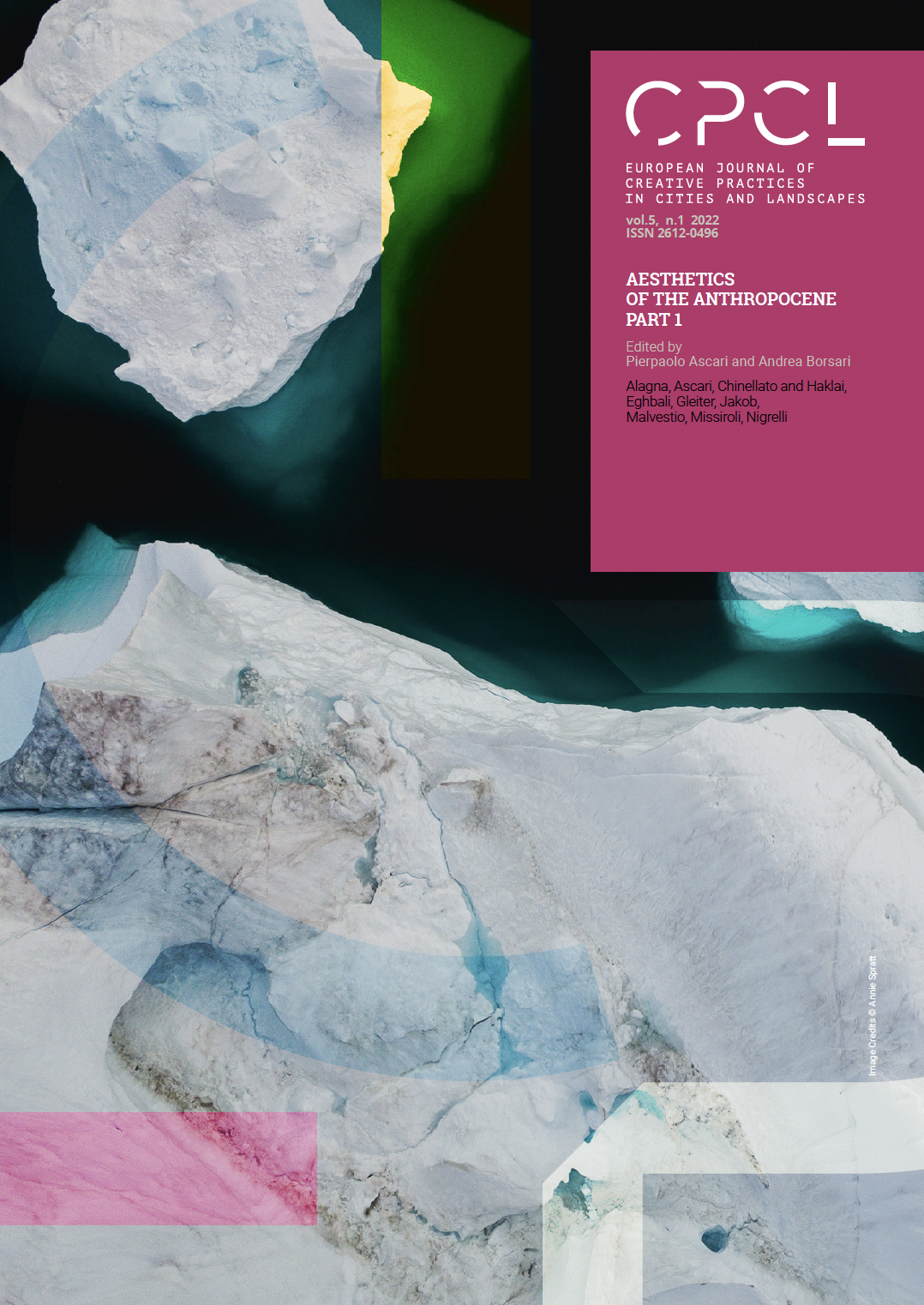The Anthropocene and the Historical Index of Architecture
DOI:
https://doi.org/10.6092/issn.2612-0496/14865Keywords:
Architecture theory, Architecture philosophy, semioticsAbstract
In the world of science, the term Anthropocene is widely recognized as the term used to describe the current epoch in the Earth’s geological time scale in which human activities are affecting the Earth system on a scale far beyond natural, geological forces. And architecture is at the center of it. For, on the one hand, human development and architecture are closely linked, for, on the other hand, it is becoming increasingly clear today that architecture has been a major project for reshaping the Earth from the very beginning. Along with devices, tools and machines, architecture is the cultural technique with which the “deficient human being”, in order to compensate for his lack of natural abilities, must intervene in nature with the aim of creating an environment that meets his changing and unchanging needs.
Today, however, man’s success story seems to turn into a disaster story, the “architecture of good intentions” seems to turn against man, even though he originally had the best of intentions when he followed the biblical mandate to subdue the earth with his devices, tools, machines, and architecture.
From an anthropological perspective, therefore, a different definition of the Anthropocene is emerging. The Anthropocene is the age in which the dialectic between man’s well-intentioned intentions and the destructive consequences for the Earth system clearly emerges. What becomes visible is that the relationship between architecture and the environment, or between humans and the Earth system, is inherently fractured and contradictory, and that this contradiction is constitutive of human existence. It follows that the Anthropocene requires a critical questioning of the dialectic of human and system earth inherent in culture.
References
Arendt, Hannah. Vita activa oder Vom tätigen Leben. München: Piper, 2002.
Benjamin, Walter. The Arcades Project. Translated by Howard Eiland and Kevin MacLaughlin. Cambridge, Mass: Harvard University Press, 2002.
Blättler, Christine. Benjamins Phantasmagorie: Wahrnehmung am Leitfaden der Technik. Berlin: Dejavu, 2021.
Durkheim, Émile. The Rules of Sociological Method. New York: Free Press, 1938.
Gehlen, Arnold. Man, His Nature and Place in the World. New York: Columbia University Press, 1988.
Habermas, Jürgen. ‘Modernity: An Unfinished Project’. In Habermas and the Unfinished Project of Modernity: Critical Essays on the Philosophical Discourse of Modernity, edited by Maurizio Passerin D’Entreves and Seyla Benhabib, 38–55. Cambridge, Mass: Polity Press, 1996.
Horn, Eva, and Hannes Bergthaller. The Anthropocene: Key Issues for the Humanities. New York; London: Routledge, 2019. https://doi.org/10.4324/9780429439735.
Latour, Bruno. Das Parlament der Dinge: für eine politische Ökologie. Translated by Gustav Roßler. Frankfurt am Main: Suhrkamp, 2010.
———. We Have Never Been Modern. Cambridge, Mass: Harvard University Press, 1991.
Morton, Timothy. Hyperobjects: Philosophy and Ecology after the End of the World. Minneapolis: University of Minneapolis Press, 2013.
Peirce, Charles S. Phänomen und Logik der Zeichen. Edited by Helmut Pape. Frankfurt am Main: Suhrkamp, 1998.
Pico della Mirandola, Giovanni. De hominis dignitate: Über die Würde des Menschen. Ditzingen: Reclam, 2009.
Plessner, Helmuth. Mit anderen Augen: Aspekte einer philosophischen Anthropologie. Ditzingen: Reclam, 2017.
Rossi, Aldo. The Architecture of the City. Cambridge, Mass: MIT Press, 1984.
Rowe, Colin. The Architecture of Good Intentions: Towards a Possible Retrospect. London: Academy Editions, 1994.
Semper, Gottfried. ‘Wissenschaft, Industrie und Kunst’. In Wissenschaft, Industrie und Kunst und andere Schriften über Architektur, Kunsthandwerk und Kunstunterricht, edited by Hans Maria Wingler. Bauhausbücher. Mainz und Berlin: Kupferberg, 1966.
Vitruvius. The Ten Books on Architecture. Translated by Morris Hicky Morgan. Cambridge Mass: Harvard University Press, 1914.
Downloads
Published
How to Cite
Issue
Section
License
Copyright (c) 2022 Joerg Gleiter

This work is licensed under a Creative Commons Attribution 4.0 International License.




